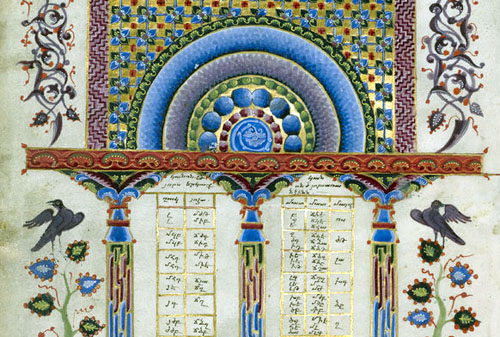LOS ANGELES – The J. Paul Getty Museum will keep eight brilliantly illustrated table of contents pages from a 750-year-old Armenian Bible after settling a long-running lawsuit brought by the Western Prelacy of the Armenian Apostolic Church.
The illustrated pages—called Canon Tables —from the Zeyt’un Gospels, by T’oros Roslin (Armenian, active 1256 – 1268), have been in the Getty’s collection since 1994. The church contended the pages had been illegally separated from the rest of the book during the Armenian genocide in World War I.
Under the settlement, the Getty acknowledges the Armenian Apostolic Church’s ownership of the eight manuscript pages. “That the pages were saved from destruction and conserved in a museum all these years means that these irreplaceable representations of Armenia’s rich artistic heritage have been and will be preserved for future generations,” said Timothy Potts, director of the J. Paul Getty Museum.
The Zeyt’un Gospels, made in the scriptorium at Hromklay for Catholicos Constantine I in 1256, are the earliest signed work of T’oros Roslin, the most accomplished illuminator and scribe in Armenia in the 1200s.
Canon tables provide a concordance of related passages that describe the same events in more than one of the four Gospels. By the early Middle Ages, the columns of numbers were usually assembled within painted architectural structures. Though Roslin used this traditional format in all of his pages, he varied the ornamental designs and naturalistic elements, imbuing each page with individuality and vitality. In medieval Armenia, religious books such as this one were believed to serve as heavenly intercessors for those involved in the books’ creation, patronage, or care. Gospel books are among the most splendid of Armenian manuscripts.










